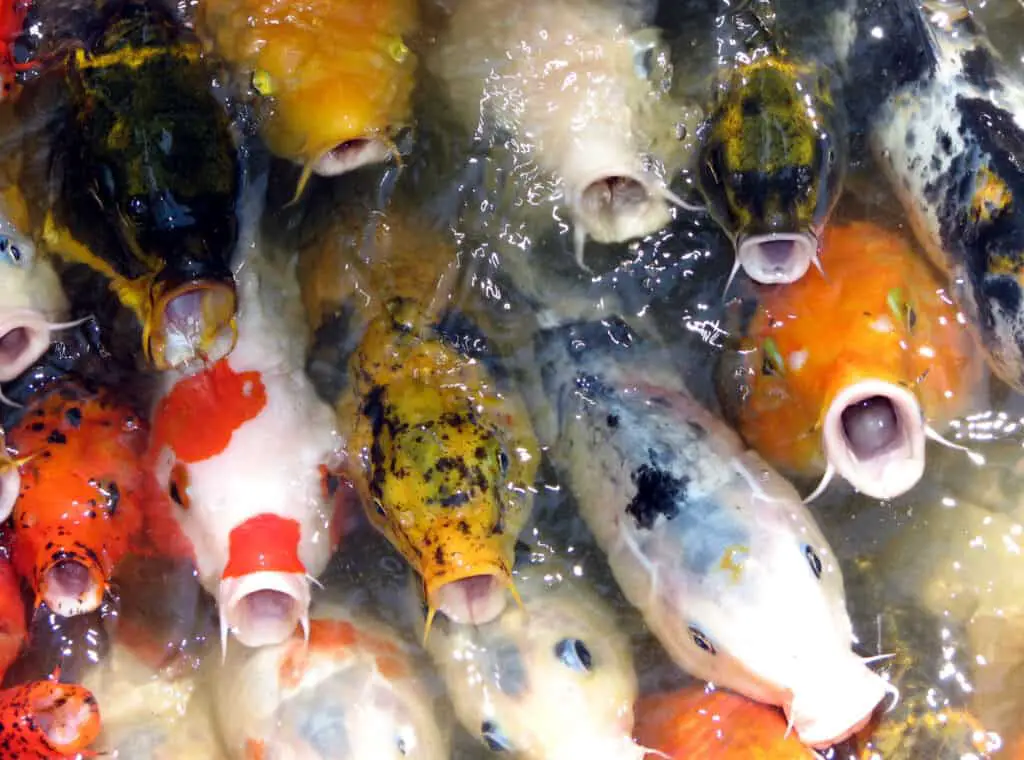
Koi fish belong to the carp species and are typically kept in outdoor ponds in Japan. Everyone knows that koi fish are beautiful fish to keep in a pond, but few know how long they can go without food? The good news is that Koi have a long lifespan. The lifespan of a koi is between 100 and 200 years, but their eating habits are fascinating.
Koi fish can go without food for up to 40 days because the liver stores the energy from food. So the fish can survive when no energy source is available. Pond-dwelling koi can survive for a month or two without food. They are usually fed two or three times each day, with smaller proportions of food.
If the thought of your precious carp going without food for days or weeks have you worried, this article will hopefully put your mind at ease and help you take care of your fish correctly.
Pro Tip: If you’re tired of wasting money and making costly mistakes on the koi-keeping hobby or are thinking about buying koi fish but don’t know where to start, I strongly suggest you check out this ebook. I recently read this ebook, and it contains SO much useful information, such as:
- 3 proven steps to identify koi fish diseases
- WARNING: 3 things you should NEVER do when it comes to caring for koi
- When to seek professional help when it comes to looking after your koi
What Happens If Koi Fish Go Too Long Without Food
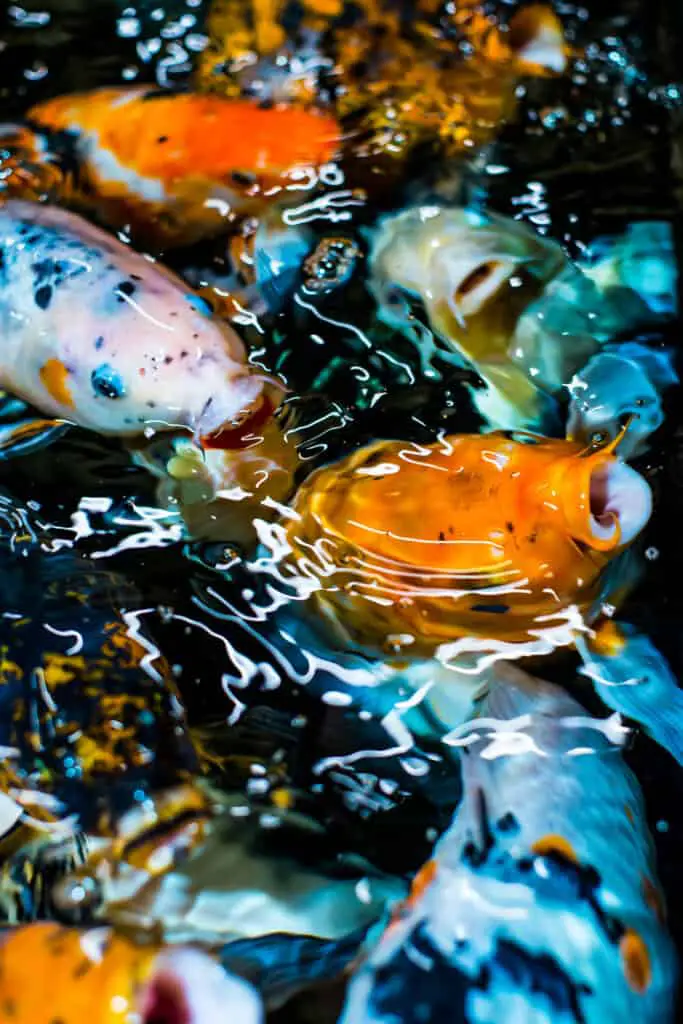
Koi fish can go without food for a very long time. A study conducted by researchers at the University of Hawaii in 1986 found that Koi could survive for an average of 96 days before losing 20 percent of their body weight. Some survived 300 or more days in the study!
What this means is even if you forgot about your fish for months, chances are good you’d find him waiting for you when you return. The fundamental reason for Koi fish’s ability to survive for long periods without food is their metabolism.
Koi fish metabolism is based on their feeding cycle. To better understand Koi fish-eating habits and metabolism, it is best to know more about their food cycles discussed below.
Food Cycle Of Koi Fish
The eating habits of Koi fish are dependent upon the seasonal temperature changes. Over the colder winter months, Koi fish are capable of living for up to 4 weeks without food. However, during summer, the maximum time they can be left without food is two weeks.
Like some other animals, Koi fish hibernate over the colder winter months. When temperatures drop to around 40 Degrees F (4,44 Degrees Celsius), Koi fish will begin to conserve their energy. You notice your fish will become lethargic, not moving around as much, nor will they eat as much.
On the other hand, when temperatures start to warm up to around 75 Degrees F (24 Degrees Celsius), their metabolism increases rapidly, and feeding between four to five times a day becomes necessary.
As the owner of these exotic fish, you also need to be aware that because of the origins of Koi fish, they dislike temperatures in the vicinity of 95 Degrees F (35 Degrees Celsius). You notice they will stop eating to preserve their energy.
It may be worth it to feed your Koi fish more carbohydrates over the hot summer months. In this way, you are guaranteed that the bulkier foods will remain for more extended periods.
Here is a temperature guide to feeding your Koi fish. This guide should shed some light on how long Koi fish can go without feeding.
| Temperature | Feeding Time |
| 95 – 100 Degrees F (35 – 38 Degrees C) | Koi fish usually lose their appetites at extremely high temperatures. Feed once or twice a day. |
| 75 – 95 Degrees F (24 – 35 Degrees C) | Feed four to five times a day |
| 75 – 65 Degrees F (24 – 18,3 Degrees C) | Feed four times a day |
| 65 – 55 Degrees F (18,3 – 13 Degrees C) | Feed three times and decrease protein intake |
| 55 – 50 Degrees F (13 – 10 Degrees C) | Feed two times a day |
| 50 – 40 Degrees F (10 – 4,44 Degrees C) | Feed three times a week) |
| Under 40 Degrees F (4,44 Degrees C) | Stop feeding |
What Are The Factors That Affect How Long Koi Can Go Without Food?
The varying temperatures are two factors that affect the feeding habits of Koi fish. There are a couple of other factors that you need to consider.
Koi Fish: Ponds Vs. Tank
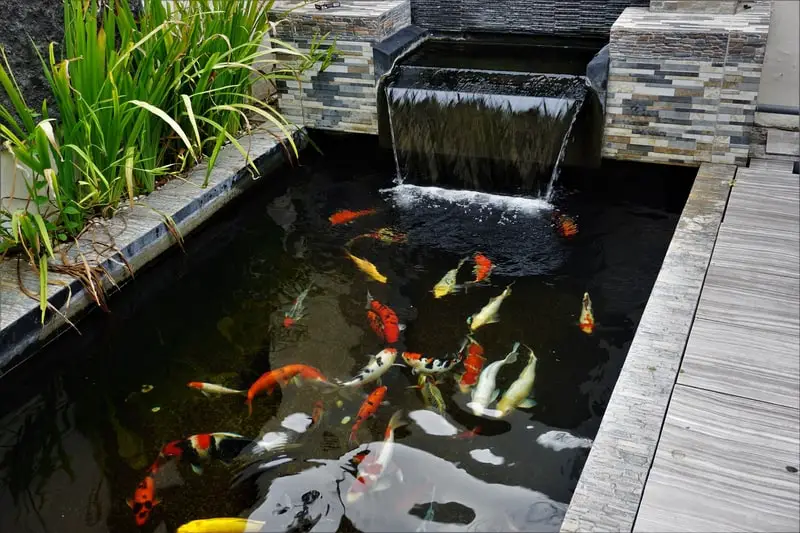
There is a significant difference in the habitat of the Koi fish and the effect this has on how long Koi fish can go without food. The natural habitat of Koi fish ponds for that’s where they thrive.
Koi fish belong to the carp species brought into Japan from China. They were initially bred as a food source. However, their bright colors and attractive patterns appealed to many people who began to keep them as ornamental fish in outdoor ponds.
Seeing as ponds are their natural habitats, there is no lack of food for Koi fish. They feed on algae, plants, insects, and smaller fish readily available in natural ponds.
Therefore, if you cannot feed your Koi fish daily, there’s no need to stress. Your Japanese Koi will find its food source from the surrounding environment.
The issue of food arises when Koi fish are kept in tanks. When we keep fish in tanks, we dislike the water getting murky, so we prefer not to add algae to the tank. If there is no live plant life or algae available, the two weeks of going without food are not applicable. You also need to consider the number of fish you have in your tank.
When there is excess fish in the tank, this results in competition for food. This reduces your fish’s chances of survival.
One benefit of having Koi fish in a tank is that you can maintain the temperature more easily than in an outdoor pond. There is less chance of the fish going hungry with a constant temperature since, as mentioned above, maintaining a temperature around 75 – 65 Deg F (24 – 18,3 Deg C) is ideal for feeding Koi.
If you are away, the constant temperature in the fish tank will ensure your koi fish can be devoid of food for up to two weeks.
Koi Fish: Seasonal Changes
The changes in the seasonal patterns also affect the feeding habits of Koi fish. We have already established how the temperature changes affect them and how to adjust their feeding habits accordingly. Let us have a closer examination of how changes in seasons affect their feeding and what to do if you cannot feed them for any duration.
What Are The Feeding Patterns Of Koi Fish During Summer
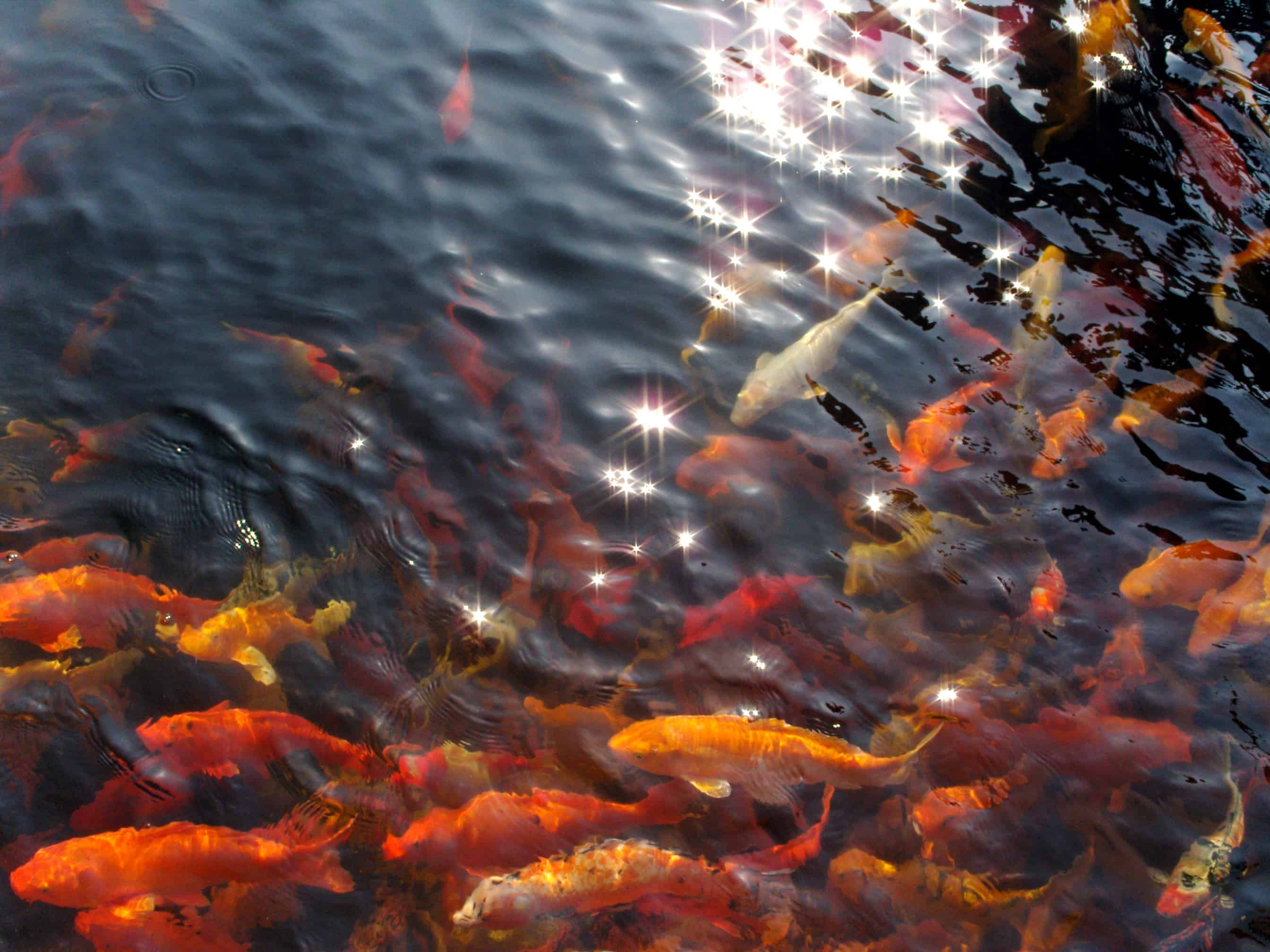
Koi fish are unused to hot temperatures, and you find over the summer months, they have a voracious appetite! This is to build up bulk before the colder temperatures set in when they rely on the food reserves stored in the liver.
Over summer, it is best to feed koi fish about four to five times a day because their metabolism is fastest over this time. During this time, your ornamental fish can do without food for the longest time, approximately two weeks. Any longer than that and the health and life expectancy of the fish may be adversely affected.
Therefore plan your holiday or business trip around the summer months when you don’t need to stress about your koi fish going without food.
Another consideration is if you expect a weather change like a storm or a rise in temperature to stop feeding the Koi fish so many times during the day. The reason is that Koi also require oxygen to aid digestion, and when there is a storm, the oxygen level in the environment drops.
What Are The Feeding Patterns Of Koi Fish Over Winter
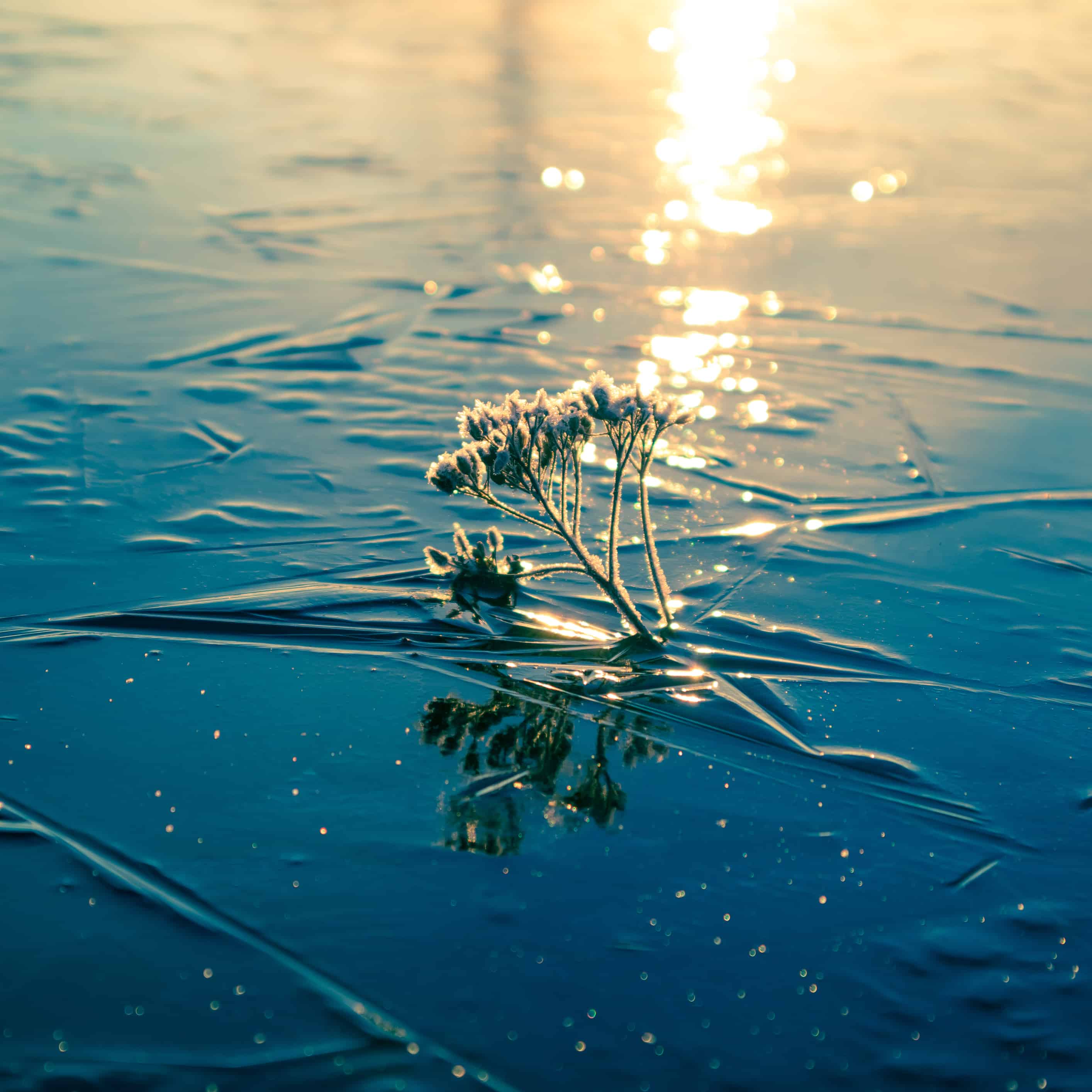
Over winter, the bodily functions of koi fish change, as do their metabolism and immune system. They go into hibernation and can remain motionless as they conserve energy.
You may feed them at least twice a day at this time. When feeding, please consider the quantity they consume in five minutes. If the koi fish eat less during the five minutes, feed them less the next feeding time. Therefore you notice koi fish going more extended periods without food during winter.
For this, you also need to consider;
· The quantity of fish in the pond
· The age of the fish
These factors impact how long koi fish can go without food.
A third factor for you to consider, especially during winter, is whether or not the koi pond freezes over. If it does, you need to cut a portion of the ice to allow oxygen and gas circulation.
If your pond does freeze over, there is no need to feed your koi fish. They cannot process the food at this time, and the uneaten food will rot, which may cause additional problems.
This also proves that koi fish can go for extended periods without food.
How To Feed Your Fish When You’re On Vacation?
Unlike regular pets, you cannot drop koi fish with the local pet sitter and hope for the best, especially during those times in the year when they need extra care and attention.
Unless you have family or a friend willing to care for your Koi in your absence, there are a few alternatives for you to consider.
Auto Feeder To Feed Koi Fish
Yes, there are auto feeders for fish as well! However, you need to check whether they are appropriate outdoors. There are several options for regular fish tanks but not so many suited to outdoor ponds. Perhaps check with your local pet store.
Outdoor auto feeders must withstand the harsh weather, namely snow, wind, and heavy rains. So, ensure the product you select is weatherproof and protects the food from damage.
A suitable outdoor auto feeder is easy to program with the time and feed portions. They are easy to set during the heavy feeding summer times or the slower feeds over winter.
However, with the outdoor auto feeder, you need to place it into a plastic bag or container to protect it against the elements. The container may be placed in the middle of the pond for the fish to access. This will discourage the fish from swimming toward the pond’s edge and attract predators.
It is also beneficial to use pellets rather than flakes, which may block the dispenser on the auto feeder.
The auto feeder is a perfect solution for feeding your Koi fish when away from your indoor tank. Like the outdoor feeder, the indoor auto feeder also has the same programmable features but has additional functions like the ventilation fan to keep the food dry and prevents splashing.
What Types Of Food Is Suitable For Koi Fish?
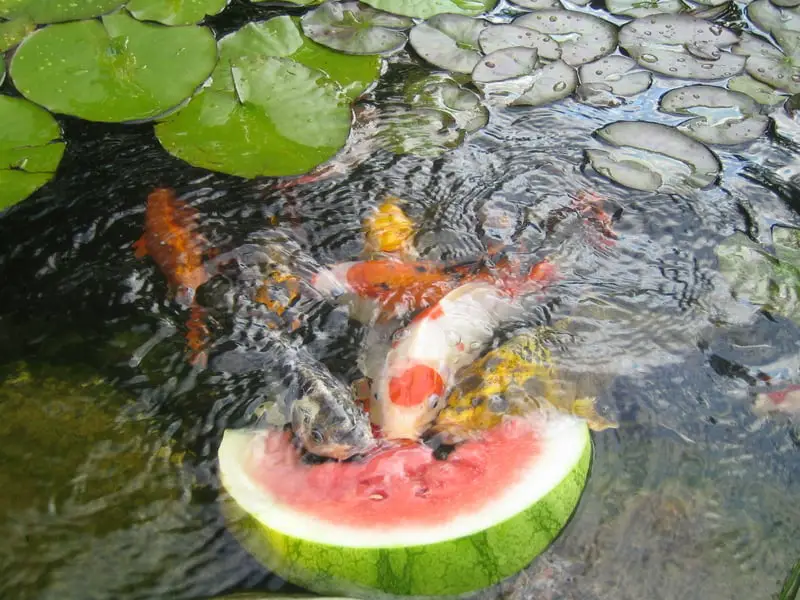
Caring for Koi fish is similar to caring for a young child. Unlike children, koi fish can feed on anything! They also require frequent small meals to ensure the food is nutritious and healthy.
Consider the seasons, which will help you decide what to feed your Koi. Some foods will fill up your koi fish if you are going to be away for extended periods. Here are examples of foods that are good for koi fish.
Over the summer months, when Koi require more food, you should be feeding them foods rich in protein with some carbohydrates. Summertime is Koi mating time, so the added protein is best for them. Foods such as frozen shrimp, which may be boiled, then sliced into pieces small enough for koi fish to eat, is a fine example of food rich in protein.
Unlike your picky eater, Koi fish enjoy fruits and vegetables! You can feed them green leafy vegetables like kale, cabbage, or lettuce. Broccoli, however, needs to be steamed until tender and sliced to be enjoyed by koi fish.
In addition to these, Koi are also known to enjoy watermelon, oranges, and bananas! These foods are easily digestible for koi fish, and they store the reserves for the winter months when they don’t eat much or at all.
From late fall and into early winter, koi fish prefer carbohydrate-rich foods. These include rice and potatoes. However, with these types of carbohydrates, some caution is warranted.
The white processed types are unsuitable for Koi fish. Like humans, processed foods may cause bloating in koi fish, which is just as uncomfortable for these little ones.
If you are going to be away and need to feed your koi fish, feed them rice and sweet potatoes. But you must remember to boil the rice and sweet potatoes first and slice the potatoes into smaller pieces that are easy for koi fish to bite and chew on.
As an extra treat for your special ornamental friends, add some honey to some of the food. But limit their intake of honey, as it’s high in fructose, which may be unpleasant for the fish in the long run.
An interesting fact I discovered while writing this article is that Koi fish recognize their feeder! When it’s feeding time, they gather around you and will greet you as their feeder. It’s a fun sight indeed!
Conclusion
Koi fish are cold-blooded, meaning their metabolism is governed by the temperature of the water. It is not just the water temperature that governs their feeding habits but also the seasons and their habitat. Koi fish can go without food for up to two weeks during summer and longer during winter. These factors are dependent on the food available in the pond.
So, if you are planning a holiday away, ensure your exotic koi fish are well fed before you leave, and don’t stress about them dying of starvation because Nature has them covered!
References
https://fromhungertohope.com/how-long-can-koi-go-without-food/
https://waterworldcraze.com/how-long-can-koi-fish-go-without-food/
https://koipondhq.com/how-long-can-koi-fish-go-without-food/
https://findanyanswer.com/how-long-can-koi-fish-go-without-being-fed

